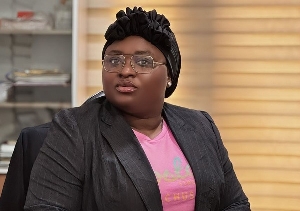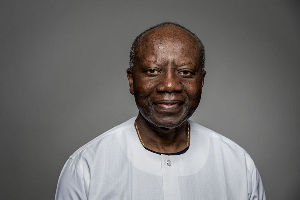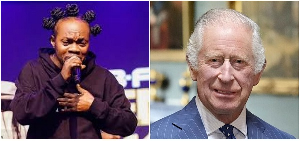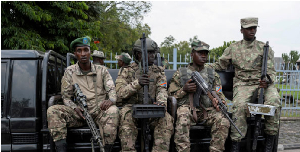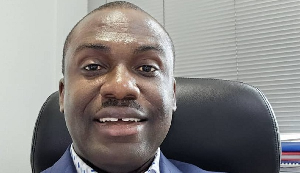A recent ruling declaring same-sex marriage as a constitutional right in the whole of the United States, on June 27, 2015, by the US Supreme Court, has resurrected, again, for the umpteenth time in Africa, the debate over the African-ness, or otherwise, of homosexuality.
In my country Ghana, the Christian Council – an umbrella body of various Christian denominations – has described same-sex relationships as “un-African,” and challenged the President, Mr John Mahama, to declare his stance on the matter, just as his predecessor John Mills did – denouncing it.
Anti-gay sentiments hold sway in many African countries, primarily due to the conservative values of the Continent. And some African leaders, appear to have taken the leadership mantle in spearheading the Continent’s anti-gay movement.
“Gays are worse than pigs and dogs,” Zimbabwe’s Robert Mugabe is on record to have said. He is in good company with fellow African leaders such as Uganda’s Yoweri Museveni, who has described gays as “disgusting” people; and Yahyah Jammeh of The Gambia, who says gays are “mosquitoes” and “vermin”.
They are homophobes, per liberal judgement, but bastions of African values; Afro-Puritans, in the eyes of the conservative African. They hold the view that homosexuality is un-African. A man fellating another couldn’t be more grotesque – culturally, morally, and, in their view, naturally. It is a taboo; insufferably sepulchral.
Even worse, to them, is the idea of men penetrating each other’s anuses with their phalluses; abominably un-African. Such abnormal debauchery could only be a post-colonial relic. The Whiteman contaminated Africa with his unnatural sexual craving.
Most African countries have a strong anti-gay cultural environment reinforced by stern anti-gay laws. Uganda and Nigeria passed separate anti-gay laws about a year ago, which prescribe harsh custodial sentences for gays and their collaborators.
Homosexuals in Africa are targets of instant (in) justice – depending on where you stand. They are, either stoned to death, or burnt alive by marauding crowds with beastly abandon. In a society struggling to find a dialectical balance between its disappearing ancient conservative values, and Afro-acquiesced invading western culture, homosexuality would be hard gulping down.
It is simply irreconcilable with what is African, the conservatives and moralists will insist. Anything “un-African” must be intolerable to Africans, and must be purged by ‘any means necessary’ – even lynching.
But Africa’s sexual minorities are fighting back. “Who defines what is un-African?” They are falling on ancient traditional practices documented by anthropologists, to counter what in their view, is a misinformed perception about homosexuality being alien to Africa.
A report titled: Expanded Criminalisation of Homosexuality in Uganda: A Flawed Narrative / Empirical Evidence and Strategic Alternatives From an African Perspective, prepared by Uganda’s sexual minorities, says anthropologists Stephen Murray and Will Roscoe, have clearly shown that homosexuality has been a “consistent and logical feature of African societies and belief systems,” throughout the Continent’s history.
Other anthropologists like Thabo Msibi of the University of Kwazulu?Natal, Marc Epprecht, E. Evans-Pritchard and Deborah P. Amory have reached similar conclusions.
To begin with, it is worth noting that the first documented case of homosexuality has been traced to Egypt (Africa) in 2400 BCE. Khnumhotep and Niankhkhnum, two male “overseers and manicurists of the Palace of the King” were depicted in a nose-kissing position in Egyptian art. However, not all anthropologists agree the two were homosexuals. Some argue they could’ve been twin brothers.
Further, among the evidence documented, is a 2000-year-old “explicit” San Bushman painting, which depicts men having sex with each other through the anus. Such archaeological evidence can’t just be wished away, in their view.
The Bushman of old wouldn’t have found it necessary to document such a practice through paintings, if nothing of the sort was happening at the time. Or would they? And could both the Egyptian art, and the Bushman painting be hoaxes? It isn’t at all uncommon in the world of archaeology, to fake such evidence.
History is replete with examples.
Also, the Nzinga – a warrior woman in the Ndongo Kingdom of the Mbundu – who ruled as ‘‘King” rather than “Queen”, was documented by a Dutch military attaché, in the late 1640s, dressed as a man surrounded in her harem, by young men dressed as women she called “wives”.
Could that be a clear manifestation of early transgenderism and transvestitism in Africa? Or are purely traditional African rituals such as this – if, indeed, anything of the sort ever happened – being stretched beyond its limits to adduce evidence to what, perhaps, could be a modern day construct? Or is the evidence too substantial to ignore?
E. Evans-Pritchard also recorded that the Azande, or Zande of Northern Congo, practised an institutionalised traditional custom, which allowed older warriors to marry younger men, who were between 12 and 20 years old. They served them as “wives”. The warriors, according to anthropologists, paid a “brideprice” to the family of the young men they married, just as happens in heterosexual marriage contracts within the same traditional setting.
The “boy-wives” served their “warrior-husbands” sexually, and domestically. Once married, the warrior-husband referred to his boy-wife’s parents as “gbiore” (father-in-law) and “negbiore” (mother-in-law).
A precursor of gay marriage in Africa? Or are the Continent’s sexual minorities clutching at straws to stake their claim? Or did this alleged practice – if proven – wield spiritual, and mystical essence than a sexual one? And should mystical rituals bearing semblances of homosexuality, necessarily be deemed homosexual in the modern context of the construct?
Eighteenth century anthropologist, Father J-B. Labat, is thought to have documented the Ganga-Ya-Chibanda, the presiding priest of the Giagues – a group within the Congo Kingdom, as routinely cross-dressing and being referred to as “grandmother”: another anthropological evidence of primordial transvestitism in Africa, it seems. And there’s a plethora of them.
The “Chibadi”, found in Southern Africa, were thought to have practised transvestitism. They were documented by a Jesuit in 1606, to have expressed aversion to, and embarrassment at, being called men.
Also, effeminate transvestites in 17th century Angola, were documented by Portuguese priests Gaspar Azevereduc, and Antonius Sequerius, to have been married by men. Such marriages were purportedly “honoured and even prized”.
Similarly, men who dressed and behaved as women in northwest Kenya and Uganda’s Iteso society had sexual relations with other men. Same-sex practices were also recorded among the Banyoro and the Langi, while in pre-colonial Benin, homosexuality was apparently seen as a natural phase for growing boys.
The Nandi and Kisii of Kenya, and parts of Eastern Africa, are also recorded to have practised female-to-female marriages, while, among the Cape Bantus, lesbianism was ascribed to women, who were in the process of becoming chief diviners, known as ‘isanuses’.
Generally, in Southern Africa, many female diviners were thought to have been either homosexual, or asexual, because the divine healer is thought to be closer to women, and by extension, had spiritual proximity to nature’s fundamental source of sustenance.
Also, the rain queen of the Lobedu Kingdom in South Africa, Modjadji, is said to have taken up to 15 young wives as she saw fit. Primordial lesbianism in African history, it may seem.
Anthropologists also claim gay sex amongst Bantu-speaking Pouhain farmers (Bene, Bulu, Fang, Jaunde, Mokuk, Mwele, Ntum and Pangwe), in present-day Gabon and Cameroon, was seen as mystical medicine for transmitting wealth. It was known as “bian nkû”ma”. Similarly, among the Nilotico Lango of Uganda, men who assumed “alternative gender status”, known traditionally as “mukodo”, could marry other men and be treated as women.
Other Ugandan tribes such as the Bahima, Banyoro, and Buganda, have also been documented to practise same-sex relationship. Buganda Monarch, King Mwanga II, who was known as the Kabaka, is documented by anthropologists, to have had sex with his male subjects. Mwanga, apparently fought Christian missionaries, who attempted getting him to stop sodomising his male subjects.
He is said to have even executed Christians who dared question his sexuality. Could same-sex activities, or semblances, have been mere channels for reaching out to the divine? Or were they really meant for pleasure, for their mere sake? Could they have been part of necessary spiritual rituals that may have inured to the benefit of communal dwelling at the time? Or did the warriors, priests, and priestesses, at the time, abuse their socio-cultural standing, and privileges, to pursue a deviant sexual desire, using spiritism and mysticism, as conspirators to cover up their debauchery?
The Igbo of Nigeria; Nuer of Sudan; and the Kuria of Tanzania; also had homosexual practices in their cultures.
Murray and Roscoe documented in their book, Boy-Wives and Female-Husbands that the Bafia people in Cameroon, saw homosexuality among young men as a normal resort to avoiding impregnating young girls during puberty. They found that boys had sex with boys as a precautionary measure for fear of impregnating girls before full maturity.
Sexual affection between girls were also common in Lesotho.
Lesbian, Gay, Bisexual and Transgender (LGBT) groups in Africa and the world are relying on these alleged anthropological facts to fight the strong anti-gay culture in Africa. To them, the evidence clearly eliminates the perception that Westerners influenced Africa’s gay culture.
As far as they are concerned, homosexuality is intricately interwoven into many African traditions, and, therefore, cannot be labeled as un-African. It predates colonialism.
So, logically, the West can’t be deemed to have influenced a culture that pervaded before its forays into Africa. And besides, the West didn’t choose Africa’s tradition for the Continent.
But the big question is, whether we could apply, retrospectively, the modern concept and construct of homosexuality, to what pertained in these African societies in ancient times, if indeed, these practices went on.
Anthropologist Marc Epprecht, in his book Heterosexual Africa? cites evidence to suggest that sexuality, in terms of how we think about it today as being an identity, did not exist in pre-colonial classifications. He says: “Homosexuality didn’t function as the antithesis to heterosexuality; rather sexuality was part of an innate spectrum. Because of this, soldiers bedding and even living with male companions were simply considered part of a natural sexual occurrence in certain areas, notably in Southern Africa.”
Will it, therefore, be fair to argue, based on the bunch of alleged anthropological evidence, that homosexuality in all its forms, isn’t un-African? Why is it that the entire African Continent has such avid aversion to it despite all the apparent compelling evidence? Should it not rather be easy for a Continent with such wealth of homosexual history and culture, to accept the practice than fight it? Or is the bundle of evidence trumped up for ex-post facto rationalisation purposes? Are Africa’s sexual minorities clutching at straw to justify a deviant sexual behaviour? Or is Africa simply running away from its homosexual past?
By: Patrick Ayumu
The writer is a Ghanaian Journalist/ Email: ttrickky@yahoo.com / Mobile phone: + 233 544322308 / Facebook: Patrick Ayumu / Twitter: Patrick Ayumu
Opinions of Monday, 20 July 2015
Columnist: Patrick Ayumu









